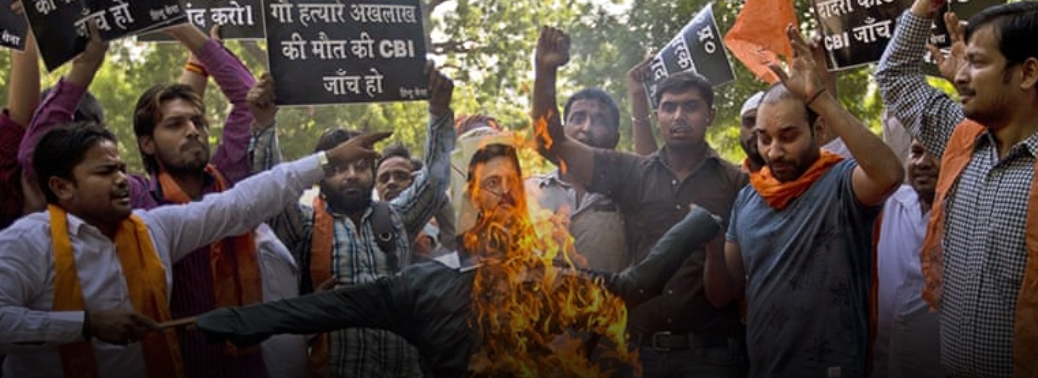MOB LYNCHING
12, Jul 2019

Prelims level : Polity Governance- Parliament
Mains level : GS-2 Indian Constitution- Historical Underpinnings, Evolution, Features, Amendments, Significant Provisions and basic structure
- Context– The Uttar Pradesh State Law Commission has drafted a stringent law to deal with increasing incidents of mob lynching.
Stats of Lynching
- Around 50 incidents of mob violence have taken place in Uttar Pradesh between 2012 and 2019.
Recommendation:
- The panel has recommended jail terms ranging from seven years to life imprisonment for assailants and up to three years in prison for police officers and district magistrates who neglect their duty.
- taking suo motu cognisance of incidents of mob lynching, said the existing law was not sufficient and there was a need to not just punish those who commit the crime but to also hold authorities responsible for dereliction of duty if such attacks occur under their watch.
Terms Define
- The draft law defines terms such as “lynching”, “mob”, “victim”, “offensive material” and “hostile environment” created against the victim or family, including boycott of trade, public humiliation, depriving people of their fundamental rights, and forcing them to leave their homes.
Compensation
- Law should contain provisions on providing compensation to a victim’s family for grievous injury or loss of life and property, and rehabilitation of the victims and their families.
Courts Stand:
- July 2018 judgment laying down guidelines to prevent mob lynching.
- The top court had decried cases of lynching and cow vigilantism and said mobocracy cannot be allowed in society. “No citizen can take law into his hands nor become law unto himself,
- They had also proposed a set of preventives, remedial and punitive measures to curb instances of lynching.
- The court had ordered the appointment of nodal police officers in all districts, efficient patrolling in areas where there was possibility of such incidents, and completion of trial in lynching cases within six months.
Guideline by Supreme Court in Case of Lynching:
- The states shall designate a senior police officer not below the rank of police superintendent as nodal officer in each district.
- These officers will set up a task force to be assisted by one DSP-rank officer for taking measures to prevent mob violence and lynching.
- The task force will gather intelligence reports on people likely to commit such crimes or who are involved in spreading hate speeches, provocative statements and fake news
- The state governments shall immediately identify districts, sub-divisions and villages where instances of lynching and mob violence have been reported in the recent past.
- The process of identification should be done within a period of three weeks from the date of the judgment.
Remedial Measures:
- Despite the preventive measures taken by the state police, if it comes to the notice of the local police that an incident of lynching or mob violence has taken place, the jurisdictional police station shall immediately lodge an FIR.
Deterrent Punishment:
- The trial court must ordinarily award the maximum sentence under the provisions of the IPC.
Punitive Measures:
- Departmental action must be taken against police or district officials who fail to act against the perpetrators. Such failure will be considered as an act of deliberate negligence and/or misconduct for which appropriate action must be taken. The action shall be taken to its logical conclusion preferably within six months.
Sociology of lynching cases:
- The victims are always those living on the margins of the society.
- The cow-vigilantes are motivated by an urge to impose hegemony of values and cultural homogeneity, by obfuscating diverse practices and beliefs.
- They dare to defy the process of law, as their acts are powered by majoritarian sentiments.
- This is not an issue within the narrow confines of law and order; it plays out on a broader canvass of socio-cultural dynamics.
- It is the tussle between rule of law and belief-systems.
- It is the friction between the privileges of the mainstream and the struggles of survival by the marginalized.
Conclusion:
- This is a complex issue which raises the conundrum of whether a democratic government should merely reflect majoritarian will or should pursue higher values of equality and justice.






